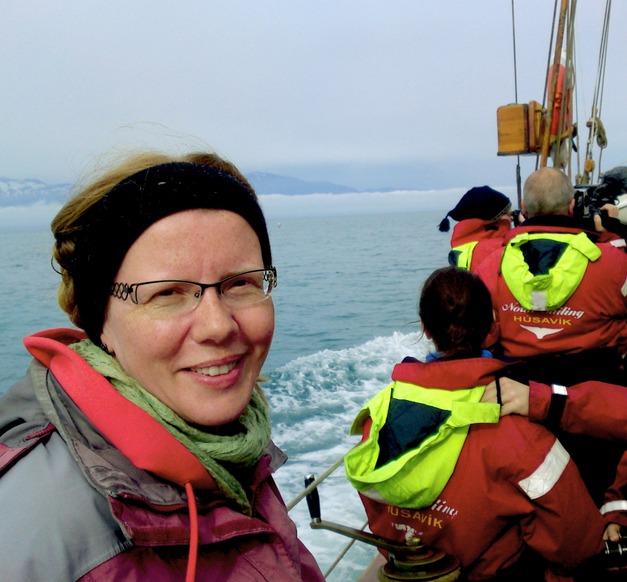Marianne Rasmussen, director of the Húsavík Research Centre
Whales have been an important resource in Iceland from the settlement. Whales and whaling have been intrinsic to Icelandic history from the very beginning.
Icelanders today exploit these valuable resources in a new way, as whale watching becomes increasingly important in tourism each year. Almost a hundred thousand travellers came to Húsavík to look for whales in Skjálfandi in 2015. Húsavík is also a place of extensive whale studies. Much of the research revolves around how whales connect sound and behaviour.
"The subject of many of my research projects is the sounds of whales with emphasis on understanding how they use sounds," says Marianne Rasmussen who has lead the Húsavík Research Centre for several years.
Marianne Rasmussen
"The results of this new project will provide us with a new insight into white-beaked dolphin communication."

Marianne's research has been incredibly extensive in the past, but she is particularly interested in the communication of white-beaked dolphins. She has recorded the sounds of various whale species but in the early autumn of 2015 she recorded them using high tech equipment and a specially designed underseas microphone with her colleagues from Germany. The microphone was diverted to the white-beaked dolphin, the most common dolphin species off the coast of Iceland. They are very common in the South; in Faxaflói and by Reykjanes during the summer months and we know that they use sounds systematically when procuring food.
Even though research scientists place increasing emphasis on studying communication between white-beaked dolphins and other whales using sound, they are a far way from interpreting whistles and other whale sounds into human symbols. They know however, that white-beaked dolphins possess individual whistles that could be interpreted as their names. "The results of this new project will provide us with a new insight into white-beaked dolphin communication and they will be published in international science journals. They will also be accessible to the public in places like the Húsavík Whale museums and whale watching companies," says Marianne who places great emphasis on the practical aspects of her research. A few start-up companies have emerged from research at the Húsavík Research Centre.


